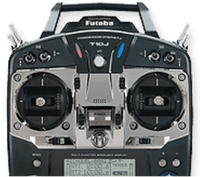Having Trouble Flying Your Jet At Higher Altitudes?
by Motion RCOver the years we have received complaints from a few customers regarding poor flight performance of their aircraft, especially jets. A quick determination would almost always inevitably reveal their flying location was at an elevation far above sea level. This would in most cases explain the poor performance of their aircraft.
Why is that? One primary factor has to do with air density. The higher the altitude, the less dense the air. When air density is compromised, aircraft performance suffers. A degrade in jet performance is especially obvious.
EDF jets for example rely on RPM and forward speed to ingest and accelerate air behind them, creating thrust. The higher the elevation above sea level (ASL), the thinner the air. The thinner the air is, the less "mass" the air has for the EDF to ingest and accelerate behind it, resulting in the lack of thrust and requirement for higher throttle settings. This phenomenon is more pronounced as EDF diameter decreases, for obvious physical reasons, which is why larger EDFs are more flyable whereas 64mm-sized EDFs struggle. But for the record, bring any sized EDF jets to somewhere at an elevation close to sea level and you'd notice an instant increase in speed, acceleration, and efficiency.
Reducing weight, increasing RPM, increasing static thrust (i.e. more fan blades), and managing cruise airspeed especially during turns while recognizing the additional lag for the EDF to spool are all ways EDF pilots deal with flying in higher elevations. For what it's worth, we have customers operating EDFs at 6,000ft+ ASL, they just take necessary precautions such as using smaller mAh batteries to save weight just as one example.
R/C pilots flying at high altitude should also be aware of the similar effect air temperature and humidity can have on an EDF, again more pronounced the smaller the EDF's diameter. Air density is a function of altitude, and temperature, and humidity. The denser the air is and within a certain temperature range, the faster and more efficient a given EDF will seem (of course there is a point in the graph where humidity and temperature begin to work against an EDF, but that's for a different Knowledge Blog article). Suffice to say within most observable combinations, an identical EDF will perform much better at sea level in dense, warm air, than it will at 5,000ft in thin, cold air. There are additional reasons, beyond favorable weather, why many EDF/jet events are often held in lower elevations and/or with ideal humidity and air temperature.
Real jet aircraft experience the same effects, of course, as they're ingesting the same air our EDFs ingest. However real jet aircraft overcome these variations by all or combinations of variable blade pitch, higher RPM, fuel mixes, ram/bleed mechanisms, and overall a much higher power output. In an RC model, especially a small 64mm-sized EDF, we just don't have access to those options.
In summary, the smaller an EDF and the higher the elevation, keep it light and keep it moving.
Disclaimer: Since we have no way of knowing a customer's specific conditions, these are merely guidelines. Temperature, Altitude, Density (of which humidity is a function). If any of these things change, then optimal performance potentially changes. In the same way that battery output, quality, model weight, viewer perception, etc impact a model's "performance". These are all outside factors beyond our control.
Get the latest from Motion RC sale and product announcements
You can unsubscribe at any time!

Hobby Squawk Community Forum
visit forum
RC Knowledge Blog
visit blog
Guidance & advice for beginners
Find out more- Choosing a selection results in a full page refresh.
- Press the space key then arrow keys to make a selection.
